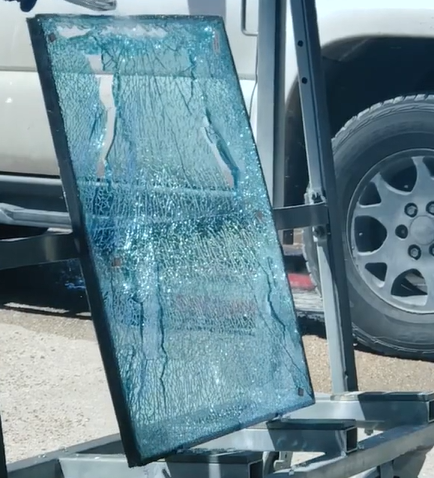Tempered glass
is glass made of the
expected materials (sand,
along with some soda ash and
limestone added to decrease
the melting temperature and
solubility respectively) but
with a very important extra
step. This extra step is
essentially to heat he glass
and then cool it very
rapidly, but there is a
little more to it than that.
The process a tempered glass
manufacturing company goes
through is roughly as
follows:
- The glass
is manufactured
- The edges
of the glass are ground
down
- Due to
the heating and
cooling process
described below the
outside edges of the
glass are weak in
comparison to the
rest of the surface,
and while this step
doesn't completely
negate this quality
it helps to reduce
the weakness of the
edges of a piece of
tempered glass.
- The glass
is heated to 1200 deg. F
- During this
step the glass molecules
become excited and the
glass expands like a
solid.
- The outside
of the glass is cooled
rapidly
- during this
step the outside of the
glass cools faster than
the inside causing
compressive and tensile
stress.
- The glass
is inspected for quality
control
Essentially the
forces created during the
process of tempering trap
potential energy in the
glass. The forces themselves
result in tempered glass
being 4-5 times stronger
than standard glass, while
the trapped energy effects
the way tempered glass
breaks.
When tempered glass breaks
it shatters into many
(relatively dull) small
pieces of glass. This is why
it is considered a safety
glass. Standard glass in
comparison breaks into
larger sharper pieces that
may more likely result in
significant injury. It has
been used in construction as
well as car side windows,
and smartphone screen
protectors.
|

source: Breaking
Tempered Glass on Vimeo |